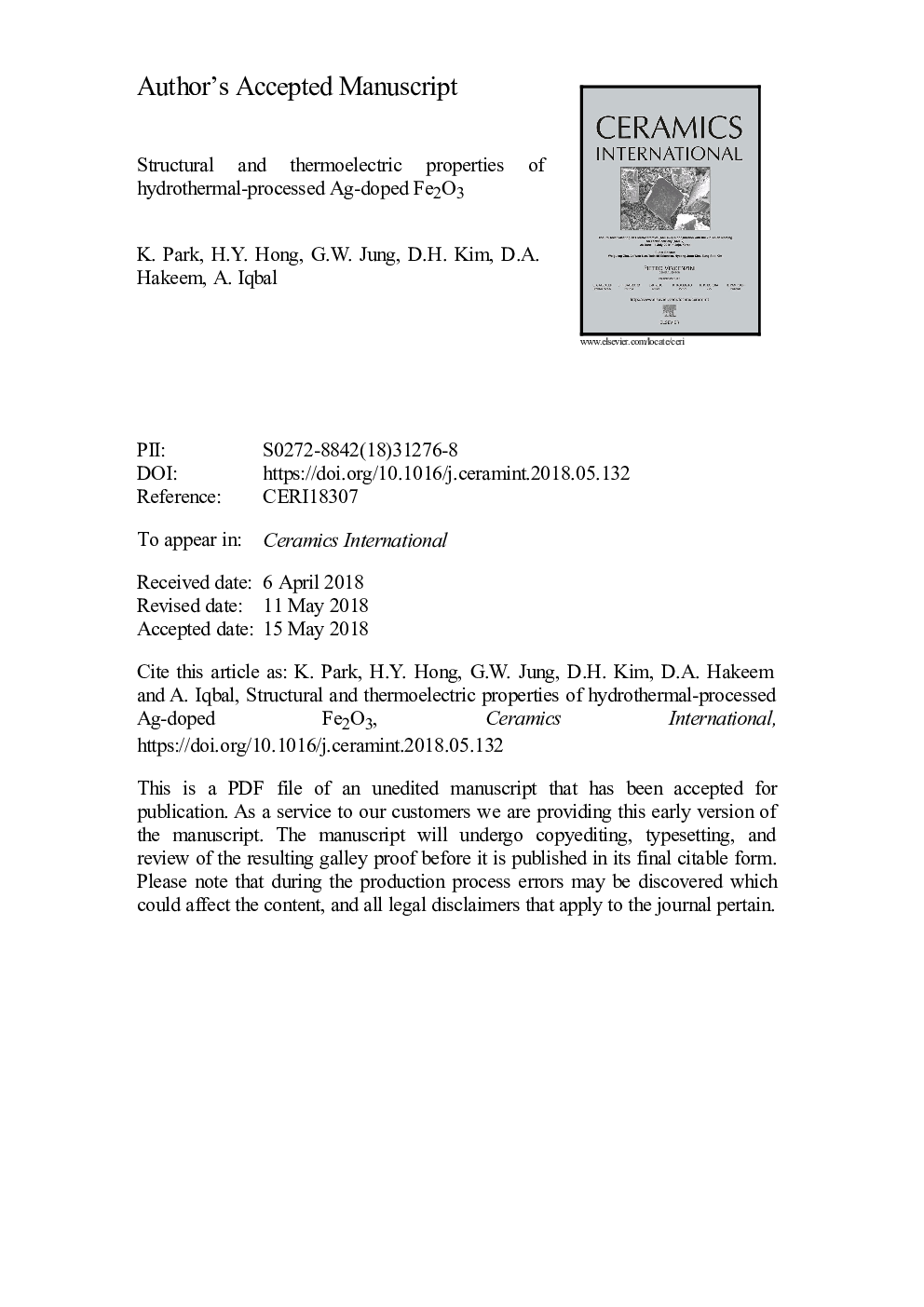| Article ID | Journal | Published Year | Pages | File Type |
|---|---|---|---|---|
| 7885977 | Ceramics International | 2018 | 37 Pages |
Abstract
Fe2-xAgxO3 (0â¯â¤â¯xâ¯â¤â¯0.04) nanopowders with various Ag contents were synthesized at different hydrothermal reaction temperatures (150â¯Â°C and 180â¯Â°C). Their structural properties were fully investigated through an X-ray diffraction, a Fourier transform infrared spectroscopy, and an X-ray photoelectron spectroscopy. The hydrothermal reaction temperature, time, and Ag content remarkably affected the morphological characteristics and crystal structure of the synthesized powders. The Fe2-xAgxO3 (0â¯â¤â¯xâ¯â¤â¯0.04) powders synthesized at 150â¯Â°C for 6â¯h and the Fe2-xAgxO3 (0.02â¯â¤â¯xâ¯â¤â¯0.04) powders synthesized at 180â¯Â°C for 12â¯h formed the orthorhombic α-FeOOH phase with a rod-like morphology, whereas the Fe2-xAgxO3 (0â¯â¤â¯xâ¯â¤â¯0.01) powders synthesized at 180â¯Â°C for 12â¯h formed the rhombohedral α-Fe2O3 phase with a spherical-like morphology. The Fe1.98Ag0.02O3 fabricated by utilizing Fe1.98Ag0.02O3 powders synthesized at 180â¯Â°C showed the largest power factor (0.64â¯Ã10â5 Wmâ1 Kâ2) and dimensionless figure-of-merit (0.0036) at 800â¯Â°C.
Keywords
Related Topics
Physical Sciences and Engineering
Materials Science
Ceramics and Composites
Authors
K. Park, H.Y. Hong, G.W. Jung, D.H. Kim, D.A. Hakeem, A. Iqbal,
